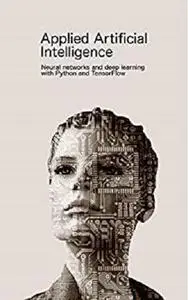Applied Artificial Intelligence: Neural networks and deep learning with Python and TensorFlow by Wolfgang Beer
English | January 4, 2017 | ISBN: N/A | ASIN: B01MS4B3AV | 76 pages | AZW3 | 0.74 Mb
English | January 4, 2017 | ISBN: N/A | ASIN: B01MS4B3AV | 76 pages | AZW3 | 0.74 Mb
What are the secrets of modern Artificial Intelligence?
How does AI beat humans in various domains, such as playing Go or predicting the future?
How can I implement my own Artificial Intelligence and push it into production with Google TensorFlow?
This book is about uncovering the basics of Artificial Neural Networks (ANN) and deep learning and how to implement AI models for production systems by using TensorFlow.
The first part of this book explains how to implement your own neural networks in Python and to apply this technique to any given problem. In step-by-step examples, the reader learns how to implement neural networks in Python and to solve non-linear problems. The book explains how neural networks are built, trained with sample data sets and how these networks are capable of solving complex problems.
The simplicity of the tutorial as well as the simple syntax of the Python language quickly enables the reader to transfer that knowledge and algorithms to any other programming language of choice.
Examples cover the design of simple neural networks for solving math functions or character recognition by using neural networks written in Python.
The second part of the book shows how to build machine learning models in Google TensorFlow and how to bring your Artificial Intelligence into production.
TensorFlow is one of the most advanced open source machine learning frameworks available today. TensorFlow easily enables data scientists to push their Artificial Intelligence into a scalable production environment.
The third part of the book is dedicated to practical and fun machine learning examples, such as to calculate book recommendations or to predict the chance of survival for passengers of RMS Titanic.
Outline
Introduction
Artificial intelligence
Neural networks and deep learning
Activation of a neuron
Training a single neuron
Model a network of neurons
Handwriting and character recognition
AI in production with TensorFlow
System architecture
Distribution architecture
Building your first computational graph
Visualizing a computational graph with TensorBoard
Implement a first linear regression model
TensorFlow high level learning API: tf.estimator
Titanic: Can we train a model to predict survival?
Crowd Intelligence: Build your own book recommender
Summary
References
Contact and download links
Credits



